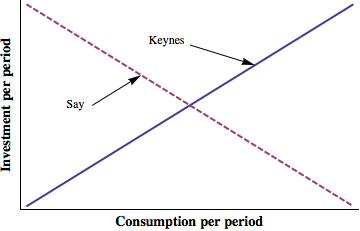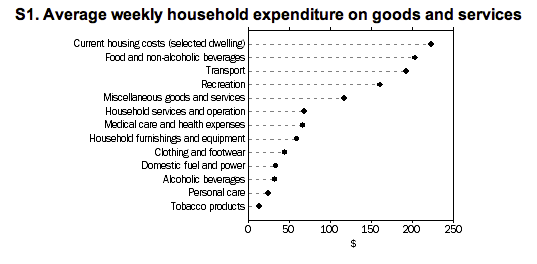The generally regarded zombie idea of Say’s law seems to be making a resurgence. A restatement of Say’s law is “production of commodities… is the one and universal cause which creates a market for the commodities produced”. Or in more common parlance, “supply creates demand”.
A current problem is the rather widespread use of Say’s law and its variations to argue against government spending as a means to increase economic activity and employment during a recession. Believers in austerity have Say’s law in their mental model of the economy and are creating havoc in political debates across Europe and the US at this critical juncture.
The now viral Keynes v Hayek rap videos express the ideological battle quite clearly, depicting some kind of debate between two economic philosophies within the discipline. Unfortunately, one shouldn’t consider this rap to be representative of the community of macro-economists. In fact, according to a survey of Australian economists 76% strongly agreed that a substantial increase in public spending is an appropriate response to a severe recession, with only 15% disagreeing*.
Over at a popular Australian blog there is plenty of discussion of this ideology. It is ideology, because these writers cannot translate their beliefs into practice.
The basic idea is that if the supply curve moves due to investment, the demand curve doesn’t even have to move because prices will adjust to the new supply. New supply drives growth. But this assumes that the whole demand curve exists, not just the point that clears markets, as the theory suggests. It also assumes that owners of capital will invest in the absence of demand at current prices, which is a stretch to say the least. Property developers for example, usually sell before they construct.
As some describe:
There is a fundamental illogic to the notion that an economy can be grown by encouraging consumption. When a person consumes, by definition, they use things up. The very process leaves us with less than before. Growing the availability of valuable goods and services for society by using them up is not just an impossibility — it’s truly an absurdity.
But here’s the rub. Consumption is using things up. But spending is not. And that’s what the call from most macro economists has been for – more spending by government.
The trade-off that adherents to Say’s law suggest is typically expressed as the pink line in the graph below. In fact exactly this graph was used by one proponent explaining their position to me.
Put simply, the more consumption, the less investment. Government spending, even in a recession, is apparently counterproductive for long term growth because all those resources devoted to extra consumption could have been devoted to greater investment.
But the difference between investment and consumption is not at all obvious when you think about it. Take cash payments to household as an example of government stimulus that is likely to be mostly consumption. Now consider what the typical household budget looks like.
Take the ABS Household Expenditure Survey (HES) data in the below chart as a guide. First up we have expenditure on current housing costs. This includes items such as rent, mortgage repayments, and repairs and maintenance. Is this consumption? Or are repairs an maintenance actual investment in the housing stock?
We have food and beverages. We could probably call all of that consumption, but I doubt there is a large marginal change in food consumption following a once-off increase in income.
Transport is the third highest expenditure item, and one that is most sensitive to changes in incomes. A large share of this expenditure is purchasing and maintaining vehicles. That is, investment in the stock of vehicles.
We have household furnishing and equipment. That is almost purely investment in capital (goods that return a service over long periods). New appliances, new furniture, new curtain, carpets are all investments in the housing stock.
We have clothing and footwear. We might think of this as consumption, but in reality new clothes add to the nations ‘capital stock of clothing’. Most clothes last a few years. So we are all wealthier for this, even if indirectly by the flood of clothes onto second hand markets.
The separation of investment and consumption is less clear that is seems. What we forget is that their is no definite boundary between the two. And we also forget the spending includes spending on newly constructed capital. New capital is simply goods we consume over a long time period. There is no trade-off in the short term, and the blue line labelled Keynes in the above graph more accurately represents the relationship between investment and consumption.
We also forget about the second round effects. Spending ends up as revenue for producers who can themselves spend on improving their own capital stock. Those property developers waiting for enough sales to reach their hurdles before construction might just invest following consumer spending on housing.
It really is time for Say’s law to die. But the willingness of those entrenched in the economic profession to continue to mislead for their paymasters means that this is not likely to happen soon.
*In fact, if you read the whole survey you might find that as a group they could be perceived as not very pro-market, or not what you might expect from the media perception of the economic debate. For instance, most agree that some restrictions on the free flow of capital significantly assist the stability and soundness of the international financial system. Most strongly agreed that the First Home Buyers Grant should be abolished. Most thing copyright protection periods should be shortened, and 74% agreed that a national excess profits tax should be levied on mining industries.
Please share this article. Tips, suggestions, comments and requests to [email protected] + follow me on Twitter @rumplestatskin

